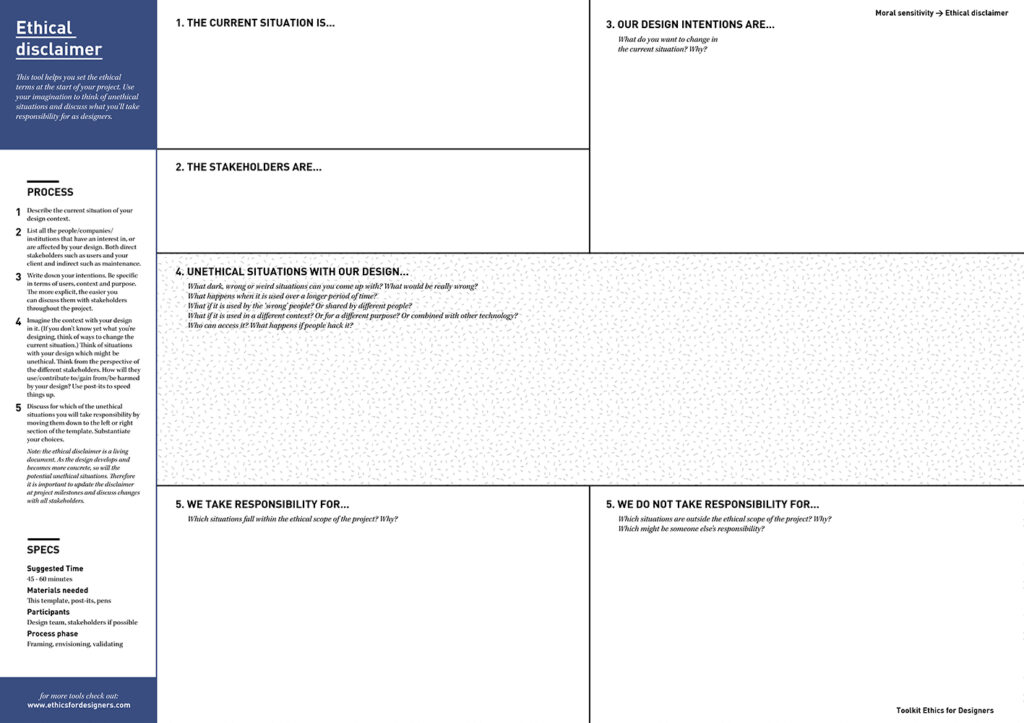Ethical Disclaimer
Method Overview
Ethical Disclaimer is a part of the Ethics for Designers Toolkit consisting of a worksheet, designed for a team of designers and stakeholders to speculate and identify unethical situations that will result from the designs through reflective questions and frame your responsibilities through the design.

Getting Started
Materials: Ethical Disclaimer worksheet, post-its, pens
Participants: Design team, stakeholders if possible
Steps: (from the Ethics for Designers website):
Using the worksheet, follow the process:
- Describe the current situation of your design context.
- List all the people/companies/institutions that have an interest in, or are affected by your design. Both direct stakeholders such as users and your client and indirect such as maintenance.
- Write down your intentions. Be specific in terms of users, context and purpose. The more explicit, the easier you can discuss them with stakeholders throughout the project.
- Imagine the context with your design in it. (If you don’t know yet what you’re designing, think of ways to change the current situation.) Think of situations with your design which might be unethical. Think from the perspective of the different stakeholders. How will they use/contribute to/gain from/be harmed by your design? Use post-its to speed things up.
- Discuss for which of the unethical situations you will take responsibility by moving them down to the left or right section of the template. Substantiate your choices.
- Note: the ethical disclaimer is a living document. As the design develops and becomes more concrete, so will the potential unethical situations. Therefore it is important to update the disclaimer at project milestones and discuss changes with all stakeholders.